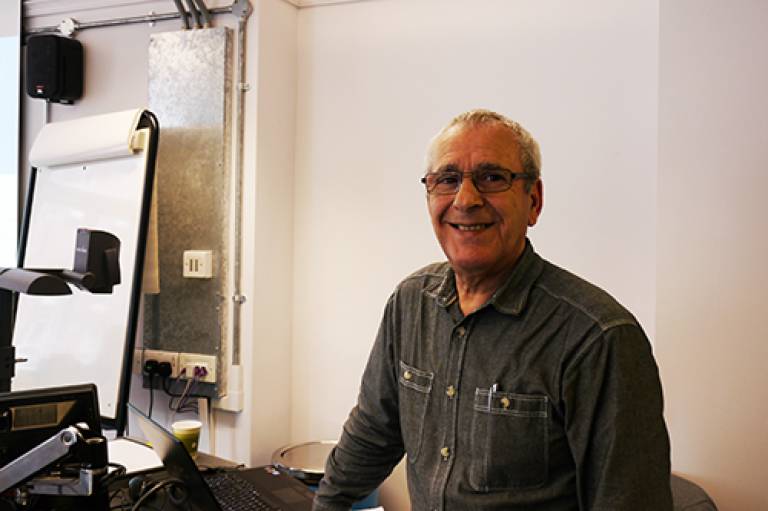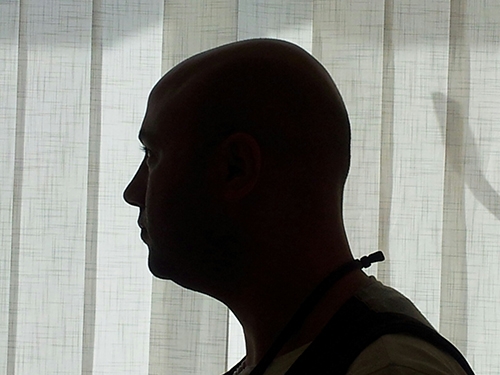5 ways to improve your teaching videos
8 April 2013
If anyone knows how to make the most out of educational video it’s Jack Koumi.

Having spent 22 years creating science programmes for BBC Open University, Jack has a career’s worth of first-hand experience of what does and doesn’t work in the context of higher education.
He visited UCL on 1 April to lead a small group workshop on the subject of ‘What and How to Teach with Video’. For those who couldn’t attend, he has provided his top five tips to instantly improve the quality, legibility and audibility of your video.
1 Get the lighting right
A common problem video-makers face is people in interior locations coming out too dark as a result of there being bright windows in the background (see image below). You can avoid this situation by covering the windows with some black net curtain. It won’t eliminate the light entirely, but it will reduce it, preventing the foreground figures becoming dark silhouettes.

But of course you also need to light the people. Most cameras have built in lights, but an inexpensive set of external lights is a good investment, especially for tight close-ups. However, if you don’t have lights available, be creative. One handy work-around is using your mobile phone as a makeshift backlight. You can do this by downloading a torch app and positioning the device behind the subject of your footage, just out of shot.
Having a backlight brings the subject out from the background and adds three-dimensionality.
2 Use cuts to create sequences
It’s natural to begin shooting sequences of events by using a single shot, panning and zooming to follow the action. Avoid this. It’s much less effective than cutting between a wide shot and then a close-up shot.
To achieve this, you need to shoot the same sequence twice and then edit the two pieces of film together. For the first sequence you use wide shots so the viewer can see the presenter and what he is demonstrating, and the second time you shoot close up. Then you edit the two sequences, interleaving the wide shots with the close-ups.
Good close-ups are essential. You’ve got to see the detail of what’s being demonstrated. I’ve watched audiences view footage without close-ups and you can see them squirming, desperate to get a closer look.
3 Shoot with two cameras
The problem with shooting the same scenario twice is that it takes twice the time and also presents continuity issues. The presenter could put their hands in a different place the second time round, and then, when you try and put the two reels together, they don’t fit. The alternative is to shoot simultaneously with two cameras from two different angles – one doing close ups and the other doing wider shots.
4 Introduce an external mic
If you rely on your camera’s built-in mic, then you can run into problems. The quality of the sound may be poor, and you can only pick up audio from the location of your camera.
Most video cameras will have an input port that you can use to attach an external microphone. There are lots of different models and prices available, but a relatively inexpensive lapel mic is a good place to start.
5 Don’t go overboard with the music
There is a temptation to blanket an entire video with music, rather than make use of the synchronous sound you’ve recorded with the images. My tip is to use music sparingly.
In particular, avoid using music when the narrator or presenter is giving essential information. And if you do use music, you need to have the right mood. My habit was to use music during a pause in the commentary to indicate to the viewer that I’d like them to ponder what’s on screen and make up their own mind, subtly guided by the mood of the track I’d selected.
 Close
Close

